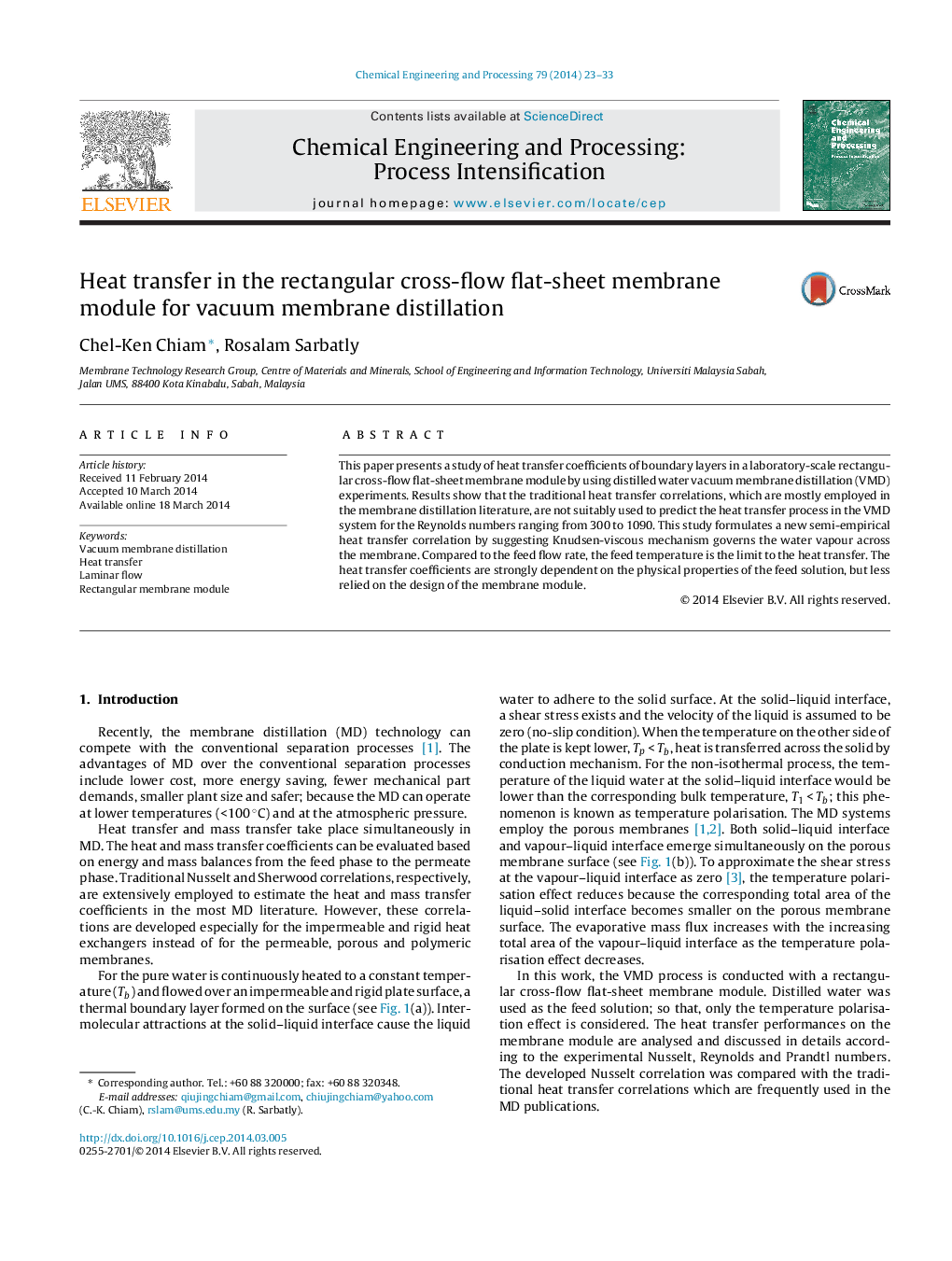| Article ID | Journal | Published Year | Pages | File Type |
|---|---|---|---|---|
| 688214 | Chemical Engineering and Processing: Process Intensification | 2014 | 11 Pages |
•Feed temperature controls the flux in the rectangular cross-flow flat-sheet VMD.•Heat transfer rate is dependent on the physical properties of the feed solution.•Heat transfer rate is less relied on the design of the membrane module.
This paper presents a study of heat transfer coefficients of boundary layers in a laboratory-scale rectangular cross-flow flat-sheet membrane module by using distilled water vacuum membrane distillation (VMD) experiments. Results show that the traditional heat transfer correlations, which are mostly employed in the membrane distillation literature, are not suitably used to predict the heat transfer process in the VMD system for the Reynolds numbers ranging from 300 to 1090. This study formulates a new semi-empirical heat transfer correlation by suggesting Knudsen-viscous mechanism governs the water vapour across the membrane. Compared to the feed flow rate, the feed temperature is the limit to the heat transfer. The heat transfer coefficients are strongly dependent on the physical properties of the feed solution, but less relied on the design of the membrane module.
